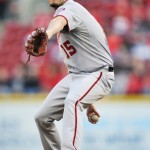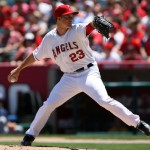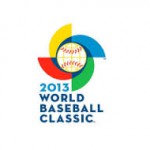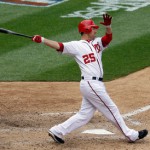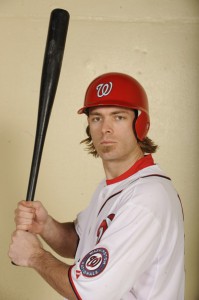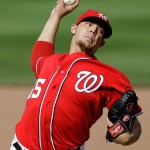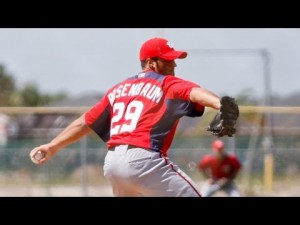Little surprise that the Major’s worst starting pitcher Dan Haren was sent to the D/L. As of 6/24/13, out of 99 qualified Starting Pitchers he currently ranks 99th in ERA, 95th in FIP, 72nd in xFIP (so there’s that) and (interestingly, since it purportedly is the best of the analytical evaluator advanced pitching stats) 48th in SIERA. As has been noted elsewhere, he’s tied for the league lead in HRs conceded. The team has lost his last nine starts, and his latest meltdown clearly has forced the team’s hand. Haren may not be the reason this team is mired at .500 (offense, offense, offense), but he’s clearly not helping either.
So the Nats have found a “soft tissue” issue with Haren (this time? a “Shoulder Strain”) and have sent him to the D/L. This isn’t the first time the Nats have used a dubious soft-tissue injury to “stash” an inflexible contract (see Rodriguez, Henry and Wang, Chien-Ming repeated D/L trips over the past two years), and while I kind of laugh at the blatant manipulation of the rules, it benefits the team to be able to remove him from the active roster but not lose him to the open market, so we’ll let it slide. (btw, how do I know that the team is playing shenanigans with the D/L trip? Read CSN Chase Hughes‘ tweet about what Haren said when informed he was going on the D/L. Haren didn’t even know what injury he was supposed to have!).
So what happens next? Adam Kilgore‘s WP article on the topic seemed to indicate that the Nats and Davey Johnson are not considering either Ross Ohlendorf or Craig Stammen for spot starts. Which I have a hard time believing frankly; both guys demonstrated their ability to pitch longer outings in the last two days in relief of failed starters. Ohlendorf has been starting all year and is exactly the kind of 4-A/6th starter that the Nats envisioned him to be when they signed him in the off-season. Why would the team do something rash like call up Taylor Jordan (as Kilgore suggested and as others are reporting) when we’ve already seen what a more polished and experienced AA-pitcher (Nathan Karns) can do when jumped far above his head too soon? Yeah, I’m excited about Jordan and what he’s done this year; but I think Ohlendorf or Stammen are better options. I’d start Ohlendorf on Saturday and see what happens.
Of course, perhaps the Nats talent evaluators are convinced that a guy (Jordan) with exactly 49 innings above A-ball is ready to replace a $13M veteran. If so, I can’t wait to see him pitch live. Even if it starts his service time clock too soon, he was a guaranteed 40-man addition ahead of the coming Rule-5 draft anyway based on his domination so far in 2013. What’s a few extra months at this point? He’s already past Super-2 status so the team has guaranteed all the control they could get over him.
As for Haren, here’s what we’re likely going to see: he’ll pay lip service to his “injury,” get an MRI, see a couple of specialists, get a shot. That’ll take a week or so. By that time we’ll know whether or not whoever gets his Saturday 6/29/13 start is worth giving another start to. If Ohlendorf or somebody pitches 6 shutout innings in Haren’s place … then Haren’s going on a long “rehab” assignment in Syracuse. And frankly, even though he’s making $13M and was supposed to be our former ace acting as a 4th starter FA acquisition, he may struggle to get his starting gig back.
Is it time to pull the plug? Well, baseball is a performance-based industry. Haren has just not performed. Is it truly because he’s pitching through injuries? Somehow I don’t think so; he was ineffective last year, he’s yet to really have a truly dominant outing this year, and the question is out there as to whether Haren is officially washed up. For as much as I looked forward to Haren’s time here when we signed him, I now feel like we can’t give him more starts unless he starts throwing shut-down outings in AAA.
PS: read this interesting nugget too: Danny Espinosa is playing short-stop in Syracuse. You know what this tells me? The same thing that Kilgore concludes: Espinosa is being showcased so that he can be shopped as a Shortstop on the trade market. Read the link; I can’t disagree with any of his analysis. Well, either that or the team is looking to move Ian Desmond and replace him w/ Espinosa. Ha.
PPS: Also reading reports on NBCSports that Mike Rizzo is burning up the pre-trade market phone lines. That’s a clear indication that this team is not ready to wave the middling .500 team flag.
